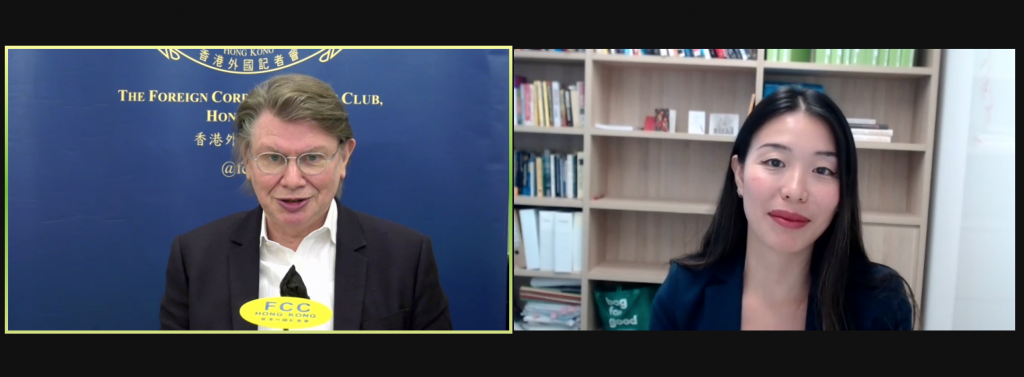
Governments, journalists share responsibility for combating vaccine misinformation

FCC First Vice President Eric Wishart left) and First Draft APAC Bureau Editor Esther Chan (right)
Governments and journalists both have a role to play in combating the spread of COVID-19 vaccine-related misinformation, First Draft APAC Bureau Editor Esther Chan said In a virtual workshop hosted by the FCC, Hong Kong. With vaccination campaigns picking up speed around the world, Chan said that vaccination campaigns and misinformation go hand in hand. “With vaccine rollout, misinformation also starts to proliferate online, and it can be because of a number of reasons: limited data about the vaccines, lack of confidence in its efficacy or even a lack of trust in the government,” she said. Chan began her presentation with a real-world example of a conspiracy theory that recently went viral in Hong Kong — that Chief Executive Carrie Lam and other government ministers did not in fact receive the Sinovac vaccine as they said, but rather the jab produced by Pfizer-BioNTech or AstraZeneca. The basis for this rumour rested on the fact that the syringe used to administer the vaccine to Lam was longer and thinner than those that had been depicted in previous news coverage of the Sinovac jab. “Even though this claim was unproven, it quickly went viral online,” Chan said. The Hong Kong government later confirmed that Lam and other officials had received the Sinovac vaccine, while pointing out that neither the Pfizer-BioNTech nor AstraZeneca jabs had arrived in the city yet. An opinion poll conducted by the University of Hong Kong at the end of January showed that less than a third of the city’s residents trusted the Sinovac vaccine. In December, Lam had responded to speculation over the reasons for her government’s decision to buy 7.5 million doses of Sinovac by saying “some people with ulterior motives were spreading malicious rumours and publishing false information that stigmatises and politicises the vaccine purchase”. Attacking critics of the government’s vaccine policy was not the most constructive approach, Chan said in the workshop moderated by FCC First Vice President Eric Wishart. “How Carrie Lam described people who were critical of the Sinovac vaccine, that’s really not helpful because there’s already maybe an issue of trust in the Hong Kong government,” she said. “It should really be an objective discussion instead of mixing politics in, so I feel like the government messaging is not really helping with the vaccine hesitancy in Hong Kong.” Similarly, she shared advice for journalists who are tasked with covering vaccine rollouts and misinformation. “When you notice something that is shaping how people think about an important issue like public health, you probably should address it but in a really careful way,” Chan said. “Back it up with a lot of important scientific data that people really should know. Lead them from focusing on a rumour back to the facts.” The workshop also focused on social media’s role in spreading vaccine misinformation, which commonly follows narratives with six different themes. While Facebook and Twitter are often considered the primary platforms for spreading misinformation, Chan explained that Instagram also plays a significant role and is often overlooked because it’s harder to search for specific content on the visual-driven platform. For journalists and anyone else seeking resources about COVID-19 vaccine misinformation, Chan recommended using First Draft as an educational tool. The organisation offers an online Vaccine Insights Hub where you can sign up to watch 30-minute workshops — including a special recap session on Friday, March 5 — and receive a weekly newsletter. First Draft also offers an extensive free library of training materials to support journalists and members of the public in understanding and managing all types of disinformation. Watch the full workshop below:




















